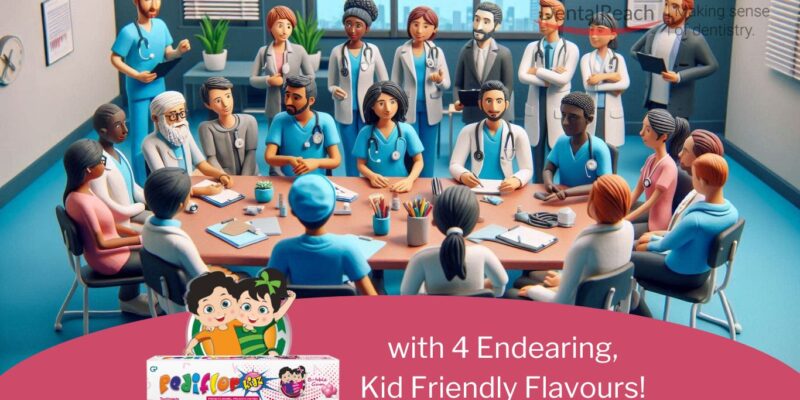The Indian healthcare system stands at a critical juncture, facing the dual challenge of meeting the healthcare needs of its vast population and addressing concerns about the professional conduct of healthcare providers. As India completes its 78th Independence Day, it is an opportune moment to chart a course for cultivating professionalism and empathy in the next generation of medical professionals.
This article explores the multifaceted challenges in fostering a culture of respect and empathy in Indian medical and dental institutes, while also acknowledging the generational differences that impact the healthcare landscape. We will offer strategies to identify and prevent abusive behaviors, promote empathy, and create a more compassionate healthcare environment.
The Current Landscape
Recent studies have highlighted concerning trends in the Indian medical education system. A survey conducted by Zhu and Tan (2019) found that 14.3% of medical students in a Singapore-based study reported experiencing mistreatment by patients and their families[1]. While this study was not conducted in India, it reflects a global concern that is likely applicable to the Indian context as well.
Moreover, research has shown a decline in empathy levels among medical students as they progress through their education. A study by Yu et al. (2023) identified various personal and external factors affecting the development of empathy in healthcare settings[2]. This decline in empathy is particularly worrying as it can lead to a deterioration in patient care and satisfaction.
Identifying Abusive Behaviors
To address the issue of abusive behaviors in medical and dental institutes, it is crucial first to identify the various forms these behaviors can take:
- Ragging and bullying: Despite being officially banned, ragging continues to be a persistent problem in many Indian medical colleges.
- Hierarchical abuse: The rigid hierarchy in medical education often leads to abuse of power, with senior doctors and faculty members mistreating junior doctors and students.
- Verbal and physical abuse: Incidents of verbal and physical abuse of junior doctors and students by seniors and even patients, are not uncommon.
- Sexual harassment: Female students and junior doctors are particularly vulnerable to sexual harassment in the medical workplace.
- Exploitation: Junior doctors are often made to work excessively long hours or perform personal tasks for seniors.
- Academic sabotage: Some seniors may deliberately withhold learning opportunities or provide incorrect information to hinder a junior’s progress.
Strategies to Prevent Abusive Behaviors
This requires a multifaceted approach that includes policy changes, education, and support systems. Here are some strategies to consider:
- Implementing Strict Policies: Medical institutions must enforce zero-tolerance policies against ragging, bullying, and harassment. Clear guidelines and consequences should be established for those who engage in such behaviors. Enforcing strict and swift action against perpetrators, including suspension and expulsion for severe cases, reinforces the strict policies.
- Creating Support Systems: Establishing counseling services and support groups for students can provide a safe space to discuss issues and seek help without fear of retaliation. Implementation of a transparent grievance redressal mechanism is a must. The institution must provide accessible mental health services, including counselors and psychiatrists on campus – this should not be difficult considering most medical colleges have a psychiatry department.
- Regular Training Programs: Conduct workshops on professional conduct, empathy training, and communication skills for both students and faculty members. The faculty must be trained to move away from authoritarian teaching styles and adopt more facilitative approaches.
- Anonymous Reporting Mechanisms: Medical and dental institutes must implement systems that allow students to report abuse anonymously without fear of repercussions. They can easily conduct regular surprise checks in hostels and other areas where ragging typically occurs; and conduct regular surveys and audits to assess the effectiveness of interventions undertaken.
- Mentorship Programs: Pairing junior doctors with senior mentors who can provide guidance and support can help in them modeling appropriate professional behavior. Organizing inter-batch cultural and sports events can help in building camaraderie.
- Promoting Work-Life Balance: Encouraging reasonable working hours for junior doctors to prevent burnout and exploitation can be challenging, but not impossible. A culture of respect can be promoted by organizing stress and time management workshops.
- Encouraging Peer Support: It is imperative for institutions to foster a culture where peers support each other by creating peer mentoring programs or buddy systems. This may also help in addressing power imbalances. Creating safe spaces for students to discuss academic and personal challenges without judgment has become crucial.
Promoting Empathy in Healthcare
Empathy is a critical component of patient care but often diminishes over the course of medical training due to stress, workload, and exposure to suffering. Here are ways to promote empathy among healthcare professionals:
- Curriculum Integration: Incorporating empathy training into the medical curriculum through role-playing exercises, patient interaction simulations, and reflective writing assignments can make a difference. Colleges can include courses on ethics, professionalism, and communication skills throughout the program.
- Patient Interaction Opportunities: Institutions should provide more opportunities for students to interact with patients early in their education under guided supervision. Conducting role-playing and simulation activities with standardized patients can help in practicing empathetic communication. Institutions can use telemedicine to expose students to diverse patient populations and practice empathetic communication in virtual settings.
- Mindfulness Practices: Introducing mindfulness practices such as meditation or yoga sessions which can help reduce stress levels among medical professionals.
- Feedback Systems: Institutions can regularly collect feedback from patients about their interactions with healthcare providers which can be used constructively to improve empathetic practices.
- Role Models & Leadership Training: Highlighting role models within the institution who exemplify compassionate care; leadership training focused on emotional intelligence should also be provided. Doctors can share stories about their experiences with patients which helps build emotional connections.
Addressing Generational Differences
The Indian healthcare landscape is witnessing a clash of generations, with older, more traditional practitioners working alongside younger, tech-savvy doctors. This generational gap can lead to misunderstandings and conflicts in approaches to patient care and professional conduct. To bridge this gap:
- Organize workshops on intergenerational communication and collaboration.
- Encourage reverse mentoring, where younger doctors can share their knowledge of technology and new research with senior practitioners.
- Promote a culture of lifelong learning for all healthcare professionals, regardless of age or experience level.
- Create opportunities for intergenerational teams to work on quality improvement projects together.
Institutional Responsibility – Key Points
Healthcare institutions play a crucial role in fostering a culture of professionalism and empathy:
- Develop and enforce clear policies against all forms of abuse and harassment.
- Provide comprehensive faculty development programs focusing on creating positive learning environments and modeling empathetic behavior.
- Implement regular assessments of the institutional climate and take action to address identified issues.
- Recognize and reward exemplary professional conduct and empathetic care.
Conclusion
As India celebrates its 78th Independence Day this month, it’s important not only reflect upon our achievements but also address areas needing improvement within our healthcare system especially concerning professionalism & empathy amongst future practitioners.
The path forward requires sustained effort and collaboration from all stakeholders – policymakers, educational institutions, healthcare providers, and students themselves. By working together, we can overcome the challenges and create a healthcare system that truly embodies the spirit of an independent, progressive, and caring India.
If you liked the article, share it with your colleagues, heads of departments and college deans. Let us make a collective difference.
References
[1] Zhu, G., & Tan, T. K. (2019). Medical student mistreatment by patients in the clinical environment: prevalence and management. BMC Medical Education, 19(1), 227.
[2] Yu, C. C., Tan, L., & Tan, L. H. (2023). The development of empathy in the healthcare setting: a qualitative approach. BMC Medical Education, 23(1), 107.
[3] McNally, G., Haque, E., Sharp, S., & Thampy, H. (2023). Teaching empathy to medical students. The Clinical Teacher, 20(1), e13557.
[4] Kumar, P. M., et al. (2024). Awareness, Knowledge, Attitude and Empathy Levels of Dental Postgraduates Towards Their Patients During Practice and Research—A Questionnaire Based Survey. BMC Oral Health, 24(1), 516.
[5] Shrivastava, S. R., et al. (2024). Cultivating Professionalism and Empathy in Healthcare: Overcoming Challenges in the Indian Medical Landscape. National Journal of Community Medicine, 15(1), 80-83.




















Comments